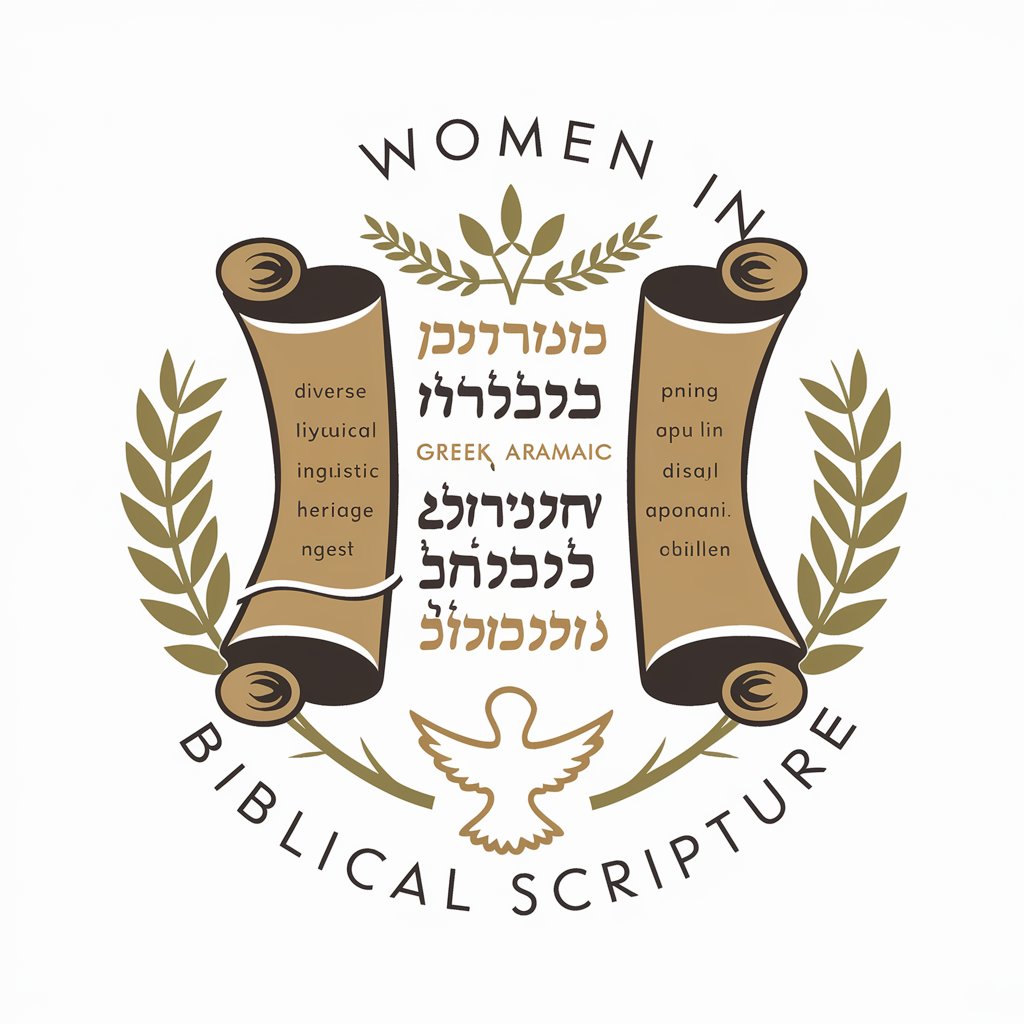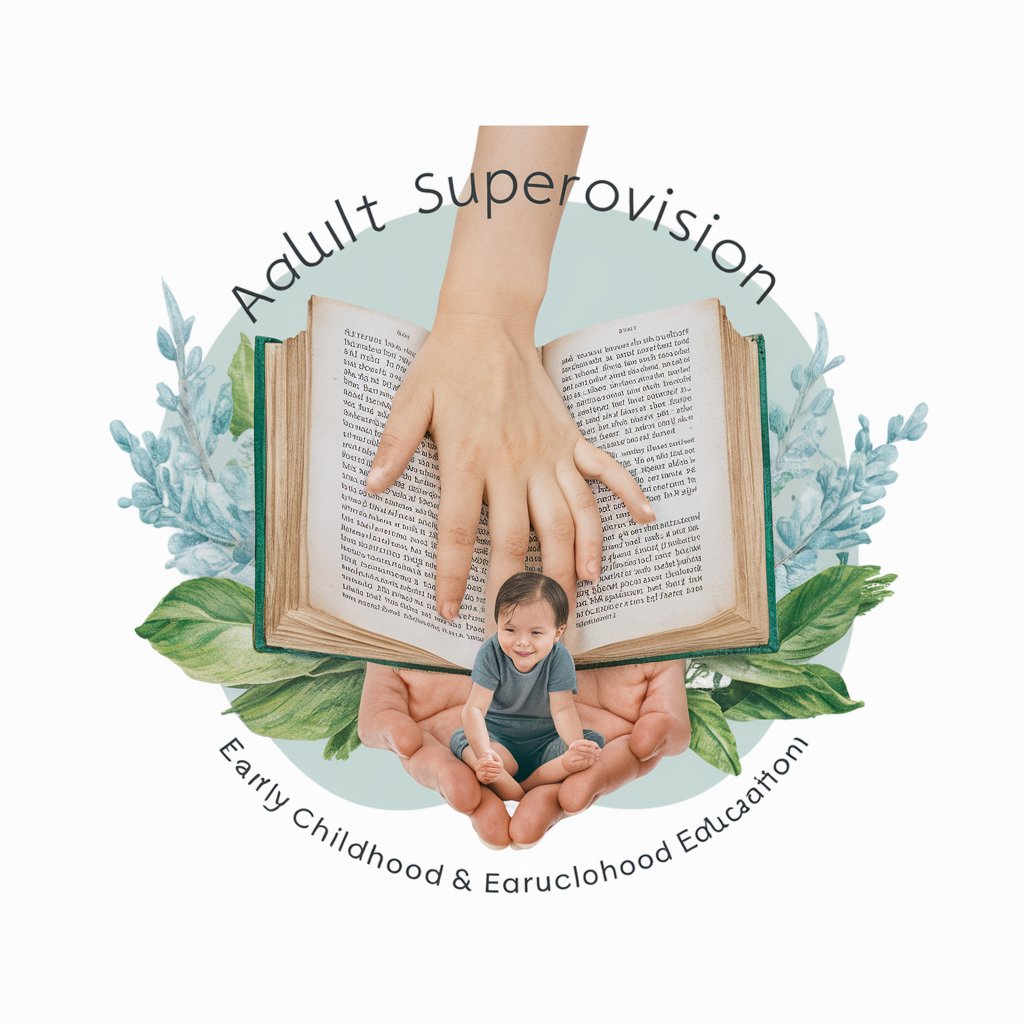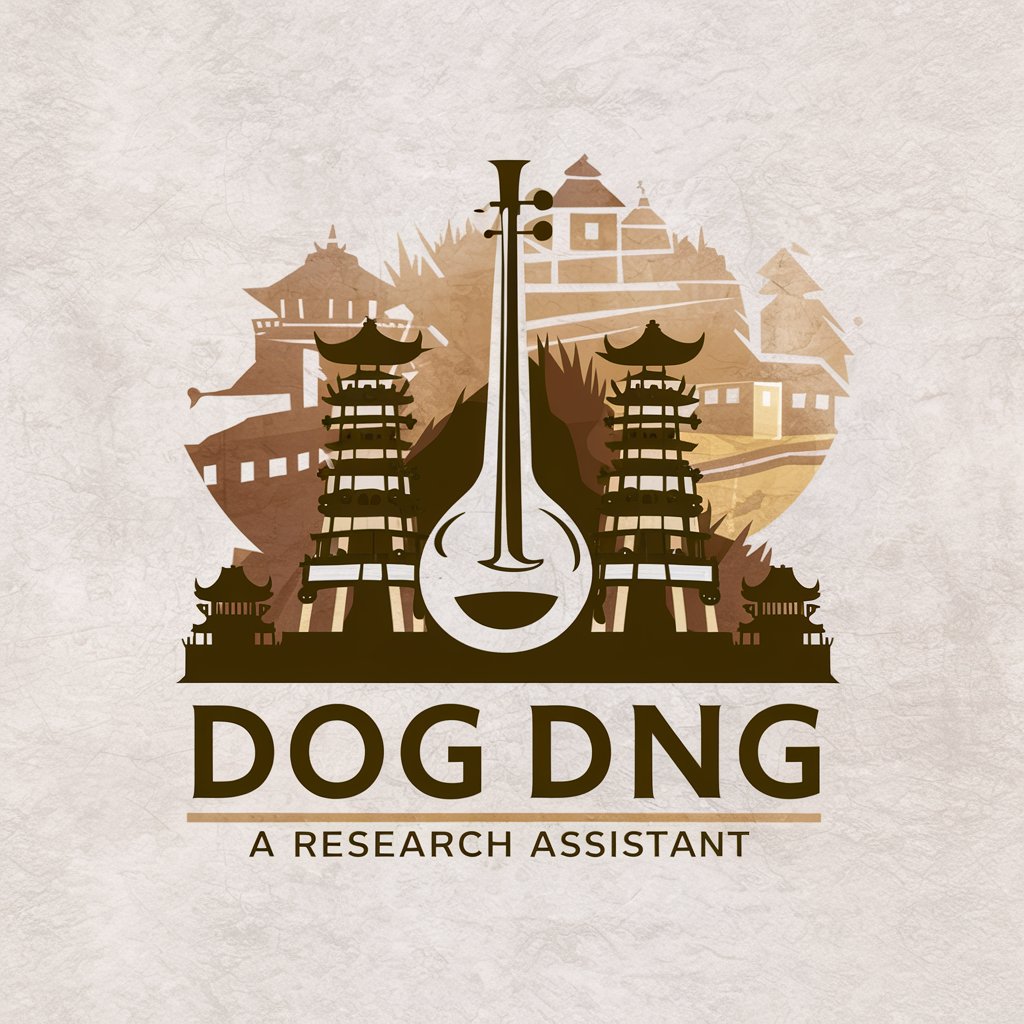Women in Biblical Scripture - Biblical Women Insight

Welcome! Let's explore the roles and depictions of women in biblical scripture together.
Illuminating the role of women in scripture with AI
Discuss the role of women in the Old Testament, focusing on their contributions and significance.
Analyze the portrayal of women in the New Testament and how it reflects the cultural context of the time.
Explain the meanings of key Hebrew, Greek, or Aramaic words related to women in biblical scripture.
Provide historical context for the treatment and status of women in ancient biblical societies.
Get Embed Code
Overview of Women in Biblical Scripture
Women in Biblical Scripture is a specialized knowledge domain focusing on the portrayal, roles, and interpretations of women within the texts of the Bible, across its Hebrew, Greek, and Aramaic translations. This domain is designed to offer a comprehensive understanding of women's narratives in biblical scripture, grounded in linguistic, historical, and cultural contexts. For example, it might explore the stories of figures like Ruth and Naomi, detailing the significance of their relationship within the cultural and legal frameworks of their time. Another scenario could involve examining the linguistic nuances in the depiction of Mary Magdalene across different gospel accounts, shedding light on her role and importance in early Christian communities. Powered by ChatGPT-4o。

Core Functions of Women in Biblical Scripture
Linguistic Analysis
Example
Examining the term 'help meet' used in Genesis to describe Eve's creation and its implications on gender roles.
Scenario
A user queries about the term 'help meet' from Genesis 2:18. The response includes an analysis of the Hebrew words 'ezer kenegdo' and discusses how various translations have interpreted these terms, highlighting the complexities and nuances in understanding Eve's role.
Historical Contextualization
Example
Exploring the societal status of women like Deborah and how it reflects ancient Israelite society.
Scenario
A user inquires about Deborah's role as a judge and prophetess. The explanation delves into the historical context of female leadership in ancient Israel, discussing Deborah's unique position and the societal norms reflected in her story.
Cultural Interpretations
Example
Analyzing Mary Magdalene's portrayal in the Gospels and apocryphal texts to understand her significance.
Scenario
A request comes in to clarify Mary Magdalene's role in Jesus' life. The response outlines her depiction in canonical and non-canonical texts, exploring how cultural perceptions of her have evolved over time.
Target Users for Women in Biblical Scripture
Academic Researchers
Scholars and students in theology, biblical studies, and religious history who seek to deepen their understanding of women's roles and representations in biblical texts. They benefit from detailed linguistic and historical analyses that can support academic research, teaching, and scholarly discussion.
Religious Educators and Leaders
Clergy, seminarians, religious educators, and lay leaders looking for nuanced explanations and contextual insights into biblical passages about women to inform their teaching, preaching, and community leadership. The detailed interpretations can help in developing more inclusive and informed theological perspectives.
General Public with Interest in Biblical Studies
Individuals with a keen interest in biblical scripture and its implications on contemporary discussions of gender, spirituality, and ethics. They benefit from accessible yet thorough analyses that bridge scholarly insights and personal or communal faith explorations.

Guidelines for Using Women in Biblical Scripture
1. Start Your Journey
Access the tool for free, no login or subscription required, at yeschat.ai for an introductory trial.
2. Identify Your Query
Formulate specific questions related to women in biblical scripture, including interpretations, translations, or historical contexts.
3. Utilize Features
Explore the tool's functionalities by inputting your queries to receive in-depth analyses, translations, and historical insights.
4. Engage with Content
Review the comprehensive responses, which include linguistic explanations and cultural contexts, to enhance your understanding.
5. Expand Your Knowledge
Use the information provided as a basis for further research or academic writing, ensuring a well-rounded exploration of the topic.
Try other advanced and practical GPTs
Adult Supervision in the Early Classroom Tutor
Empowering educators with AI-driven supervision insights.

grAIhat
Exploit AI, Enhance Experience

"Prokureur - Lawyer "
AI-Powered Legal Expert at Your Fingertips

研究侗族
Exploring Dong Culture with AI

Question.AI
Empowering Inquiries with AI

Sage of the Seagull
Explore wisdom inspired by nature's simplicity.

FlutterGPT
Empowering Flutter Development with AI

Laser Etch Image Generator
Design, Customize, Etch – Effortlessly

Sommelier Inteligente
AI-powered Personal Wine Guide

Global Tax Advisor
Empowering tax insights with AI

Santa's Reindeer from TalkTimeFriends.com!
Bringing Christmas Magic to Chat

Simulated Patient
Practice medicine, powered by AI.

In-depth Q&A on Women in Biblical Scripture
How does the tool interpret the role of women in the Old Testament?
The tool examines Hebrew texts and historical contexts to provide nuanced interpretations of women's roles in the Old Testament, highlighting their contributions and the evolution of their portrayal over time.
Can it analyze New Testament passages related to women?
Yes, the tool delves into Greek translations and cultural backgrounds of the New Testament, offering insights into passages related to women, including their societal roles and the implications of these texts today.
Does the tool provide linguistic analysis of specific terms related to women in scripture?
Indeed, it offers detailed linguistic analysis of Hebrew, Greek, and Aramaic terms, clarifying nuances in the portrayal of women and contributing to a deeper understanding of biblical texts.
How can this tool assist in academic research on biblical women?
It serves as a valuable resource for academic research by providing detailed explanations, historical contexts, and linguistic insights that enrich scholarly work on women in biblical scripture.
Can the tool help understand controversial passages about women?
Absolutely, it addresses controversial passages by offering balanced interpretations, rooted in thorough linguistic and historical analysis, to illuminate the complexities of these texts.
